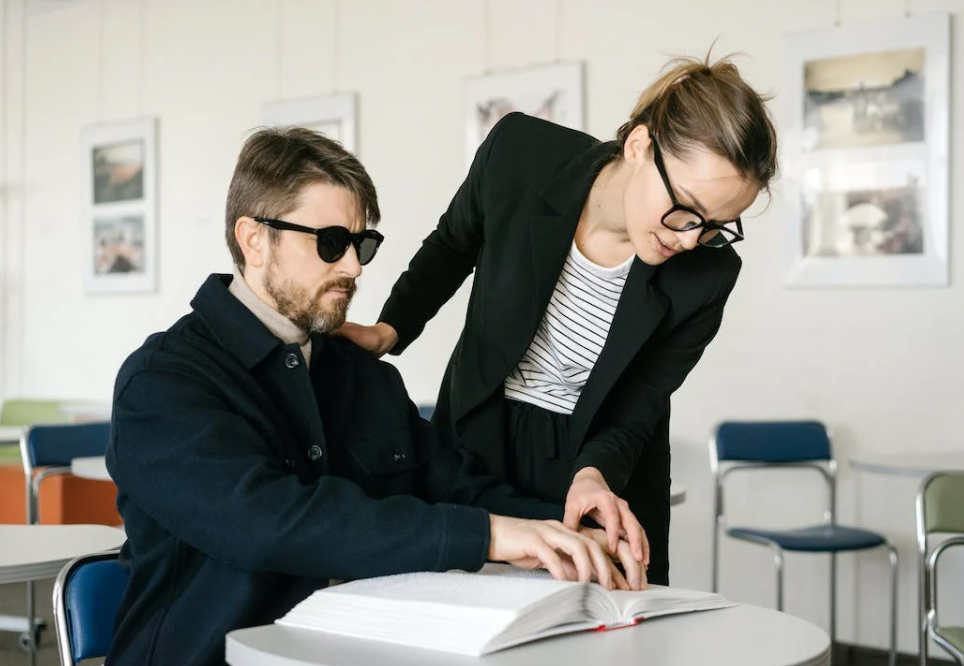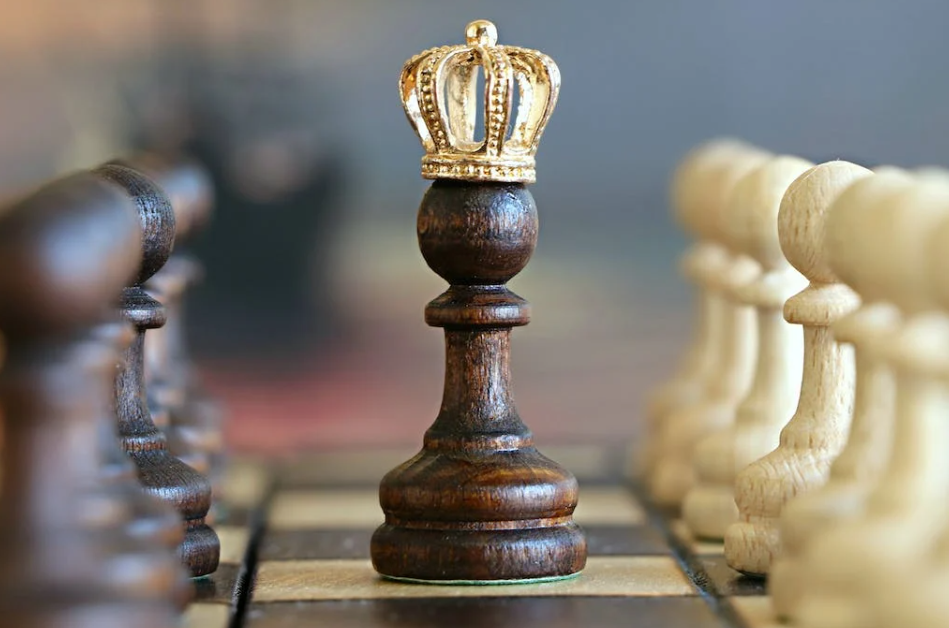How to Use Visualization As a Relaxation Technique?
Learn how to use visualization as a relaxation technique to help you calm down and achieve a state of peace.

Selfpause Affirmation App
Download the app to get 1,000’s of affirmation meditations and everything you need to write, record and listen to your own.
Visualization is a great relaxation technique that can help you calm your mind and achieve a peaceful state. Using this technique involves thinking about the future using all of your senses, and then gradually bringing your thoughts back to the present. It’s important to practice visualization a few times a day. This relaxation technique works best when you’re not feeling anxious, but even when you are, it can help to lower your stress levels.
Guided imagery

Guided imagery for relaxation is a technique that helps people to calm down. The process is quite simple and can help people relieve stress and anxiety. Typically, the process begins with deep breathing. Once you have relaxed, you can then use the technique you choose to focus on certain situations. To start, you will want to choose a comfortable location and turn off the phone.
Guided imagery helps people relax by using their imagination to experience different scenes. The process can be done with the help of an instructor or an audio recording. The practitioner needs to develop the skills necessary for the practice to be successful. These skills include steady breathing, visualizing vividly, and listening attentively. With practice, guided imagery can help you relax completely.
Guided imagery can help you relax at any time of the day or night. It can also help you release tightness in your muscles. It can also help you solve problems instantly. You can use this technique while waiting for a test result, in the waiting room, or before you go to sleep.
Self-motivation

Visualization is a powerful self-motivation relaxation technique. It works by allowing you to experience peaceful moments while you’re focused on a goal or a place. It also works to reduce stress. If you’re constantly stressed out, it can be difficult to focus on anything.
To use visualization to motivate yourself, select a specific, achievable outcome. This can be a goal or a new habit that you want to form. Once you’re able to focus on a specific, achievable result, you can enter the alpha state (a state of relaxation) with self-hypnosis or meditation. In this state, you can visualize the problem situation objectively. You can even imagine the pain of your current behavior, and gradually fade the image as you focus on a more colorful scene.
Visualization is particularly effective when applied to anxiety or stress. By imagining yourself in a desirable state, you’ll be more likely to avoid negative thoughts and feelings, and thus increase your chances of success. It will also help you reduce anxiety, stress, and fear, which can all lead to an increase in motivation and productivity.
Creative visualization

Creative visualization involves the use of images in the mind. Many tennis players practice by imagining hitting a backhand with perfect form. Others visualize a rich future. Many famous people claim that they visualized success before it happened. The purpose of creative visualization is to guide our intuition. We can use images to achieve our goals and feel good about ourselves.
Visualization is most effective when practiced in a comfortable place away from stress. It can be an actual place, scene, or goal that you wish to achieve. Visualization works best if you practice it a few times a day. If you are suffering from anxiety, it may be more effective if you practice visualization regularly.
Visualization is most effective with closed eyes. However, it can also be done while keeping your eyes open. If you feel uncomfortable doing this, you can open your eyes and practice deep breathing. This technique can help you focus better and feel more relaxed. You can visualize images of anything that you would like to change, whether it is your appearance, circumstances, or beliefs.
Visualization has the potential to improve all aspects of your life. It has been shown to improve your diet, your self-esteem, your motivation, and your cognitive ability. Athletes, for example, train with visualization to achieve their goals. Most sports coaches agree that a person’s mental game accounts for 90% of his or her success.
Meditation posture

Meditation posture involves relaxing by focusing on an object while inhaling and exhaling. When doing this, you should close your eyes and focus on your breathing. You should also focus on positive thoughts. Visualization is best done while the eyes are closed, but you can practice it while your eyes are open.
To practice visualization meditation, you need to be sitting in a comfortable position. Try to focus on the toes of your right foot. Since the sensations and imagine a deep breath flowing from your head to your toes. Try to stay focused for three to five seconds.
You can also practice visualization techniques while lying on a comfortable surface. For example, you can imagine a peaceful place. You can also visualize your muscles while tensing and relaxing. This will help you focus on letting the tension go and experiencing deep relaxation. There are many audio programs and books available for this technique.
In addition to being able to relax and relieve stress, visualization meditation can improve your general well-being. It encourages your imagination and can help you accomplish your goals.
Stress reduction
Visualization is a great relaxation technique to use to reduce stress. Visualization involves imagining yourself in a relaxing environment. The technique can take as little as two or three minutes to complete. It helps to prepare for visualization by performing another relaxation technique before beginning. Start by breathing normally and feeling your stomach rise and fall with each inhalation and exhalation. Repeat this breathing exercise 10 times.
Visualization is most effective when it involves using all your senses. The more details you can include in your picture, the more easily you will be able to relax. Visualization is a great stress reduction technique, but it requires some practice and concentration. You should be in a quiet place and be comfortable. You should also close your eyes and breathe deeply.
Visualization can help you relax anytime you feel stressed or anxious. It does take some practice but will become second nature to you. Try imagining a beautiful place and feeling good. Then slowly come back to the present. Doing this several times a day will help you become more relaxed.
Effectiveness

Visualization relaxation techniques are effective ways to relax. You can use them in different ways, such as repeating a mantra or focusing on a specific image. It is also helpful if you practice several times a day. You can even set a timer to see how long you can hold a visual.
Before starting your visualization exercises, prepare the surrounding area for comfort. Make sure that the room is quiet and free of distractions. Also, remove any jewelry or clothing that restricts your movement. It is best to lie or sit on a comfortable surface. Be sure to think positive thoughts, like being at peace and relaxed.
Visualization can improve many aspects of your life. For example, it can help improve your diet or fitness. A recent study found that targeted mental imagery can improve dietary goals. For instance, visualizing yourself eating fruit can make you want to eat more fruit. Your diet is an important factor in your overall health, self-esteem, motivation, and even your relationships. Visualization can help you achieve these goals by reducing stress and improving your health.
It can also help with anxiety and depression. Practicing guided imagery has been shown to reduce stress in people suffering from post-traumatic stress, grief, and anxiety. This relaxation technique can help you relax anytime, anywhere.
Practice
The first step to practicing visualization relaxation is to prepare your environment. Get rid of any distractions that might distract you, and select a comfortable place to sit or lie. You should also remove any heavy jewelry or restricting clothing. Once you have prepared your environment, you can begin your visualization. It is also helpful to have a quiet place to practice the technique.
Visualization is not an easy exercise, but it is essential for mental health. To get the most benefits, practice the technique several times a day. It is also more effective if you are not experiencing high levels of anxiety. Once you have mastered this exercise, you will find that it becomes second nature.
This relaxation technique has a variety of benefits, from stress relief to mood improvement. You can visualize a particular emotion, a certain color, or a soothing place. Once you get used to visualizing, you can practice it whenever you feel anxious or stressed. If you find yourself in a stressful situation, take a few minutes to visualize a relaxing scenario and see how your mood improves.
The next step in practicing visualization is to find a calm place to sit. You may want to use a quiet room, a beach, or a wooded trail. A peaceful scene can be anything you want, such as watching the sunrise, going on a peaceful walk, or playing with a kitten or puppy. It is important to make the visualization as detailed as possible, including the environment and tangible objects.
Our Top FAQ's
Visualizations work as a relaxation technique by allowing you to focus your attention on a specific image, sensation, or idea in order to calm your mind and body. When you engage in visualization, you may be able to distract yourself from stressors and negative thoughts, and instead focus on something positive or soothing. This can help you feel more relaxed and centered.
Some common visualization techniques for relaxation include:
- Guided imagery: This involves listening to a recorded script or following along with a live guide as they describe a peaceful or calming scene. You may be encouraged to use your imagination to fully experience the scene, including the sights, sounds, and feelings associated with it.
- Body scan: This involves lying down and focusing on each part of your body in turn, starting at the top of your head and working your way down to your toes. As you focus on each body part, you may be asked to imagine a wave of relaxation flowing through it, or to visualize it as a specific color or shape.
- Progressive muscle relaxation: This involves tensing and relaxing different muscle groups in your body, starting with your toes and working up to your head. As you tense each muscle group, you may be asked to hold the tension for a few seconds before releasing it.
To create a visualization exercise tailored to your personal relaxation needs, you can consider what types of imagery or sensations are most calming or soothing to you. For example, you might prefer visualization exercises that involve nature scenes, such as a beach or a forest, or you might prefer more abstract imagery, such as a sense of warmth or a feeling of weightlessness. You can also consider what types of relaxation techniques work best for you, such as focusing on your breath, repeating a mantra, or practicing mindfulness.
There are generally few negative effects or drawbacks to using visualization as a relaxation technique, as long as it is practiced in a safe and healthy way. However, it is important to keep in mind that visualization is not a substitute for medical treatment and should not be used in place of seeking help for serious mental or physical health concerns. If you are experiencing significant stress or anxiety, it is important to speak with a healthcare professional.
The frequency and duration of visualization as a relaxation technique will depend on your personal needs and preferences. Some people find it helpful to practice visualization daily, while others may only need to use it occasionally. The length of each visualization session can also vary, but many people find that 10-20 minutes is a good starting point. You can experiment with different frequencies and durations to see what works best for you. It is also important to listen to your body and stop the visualization if you start to feel anxious or uncomfortable.
